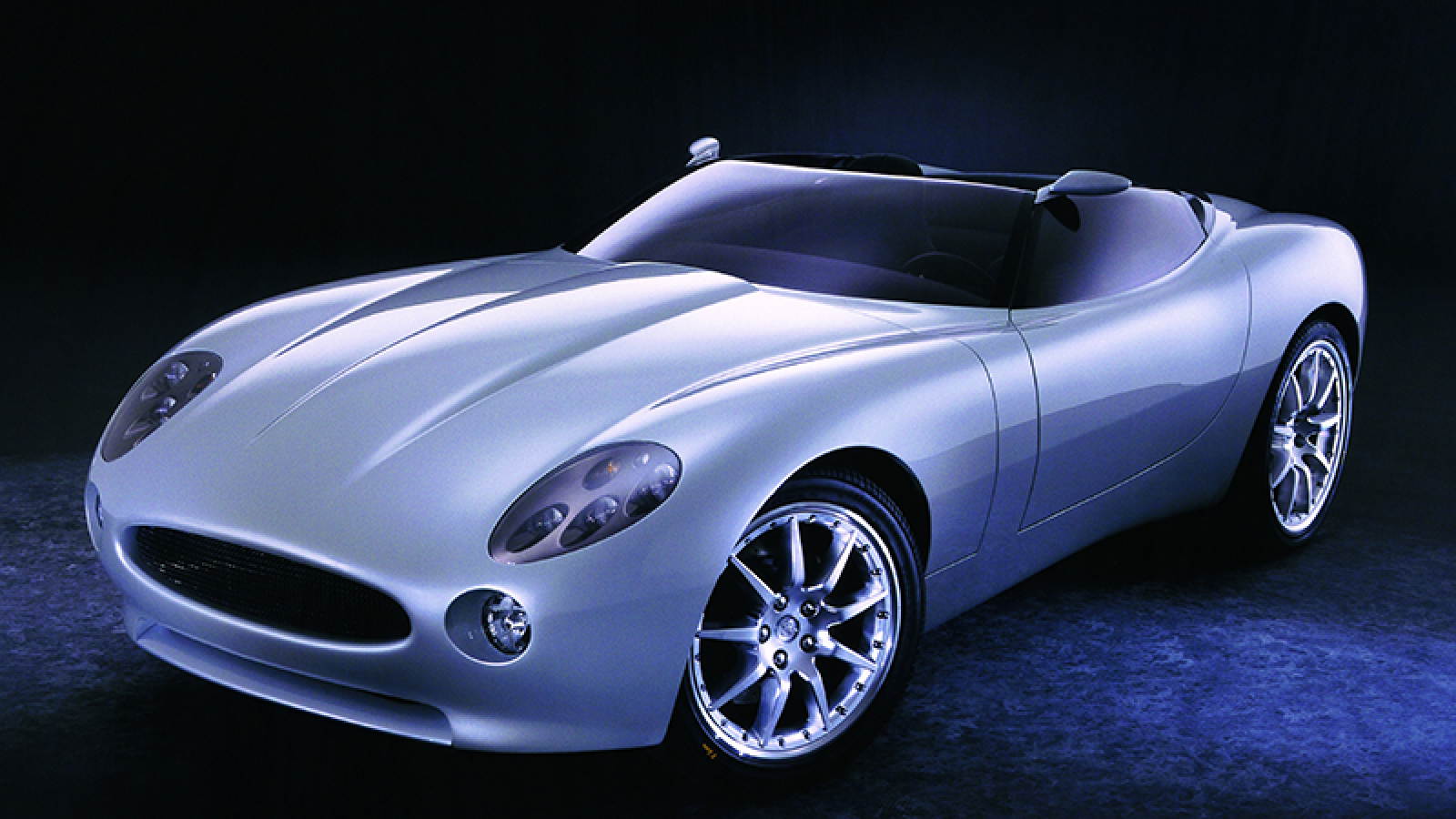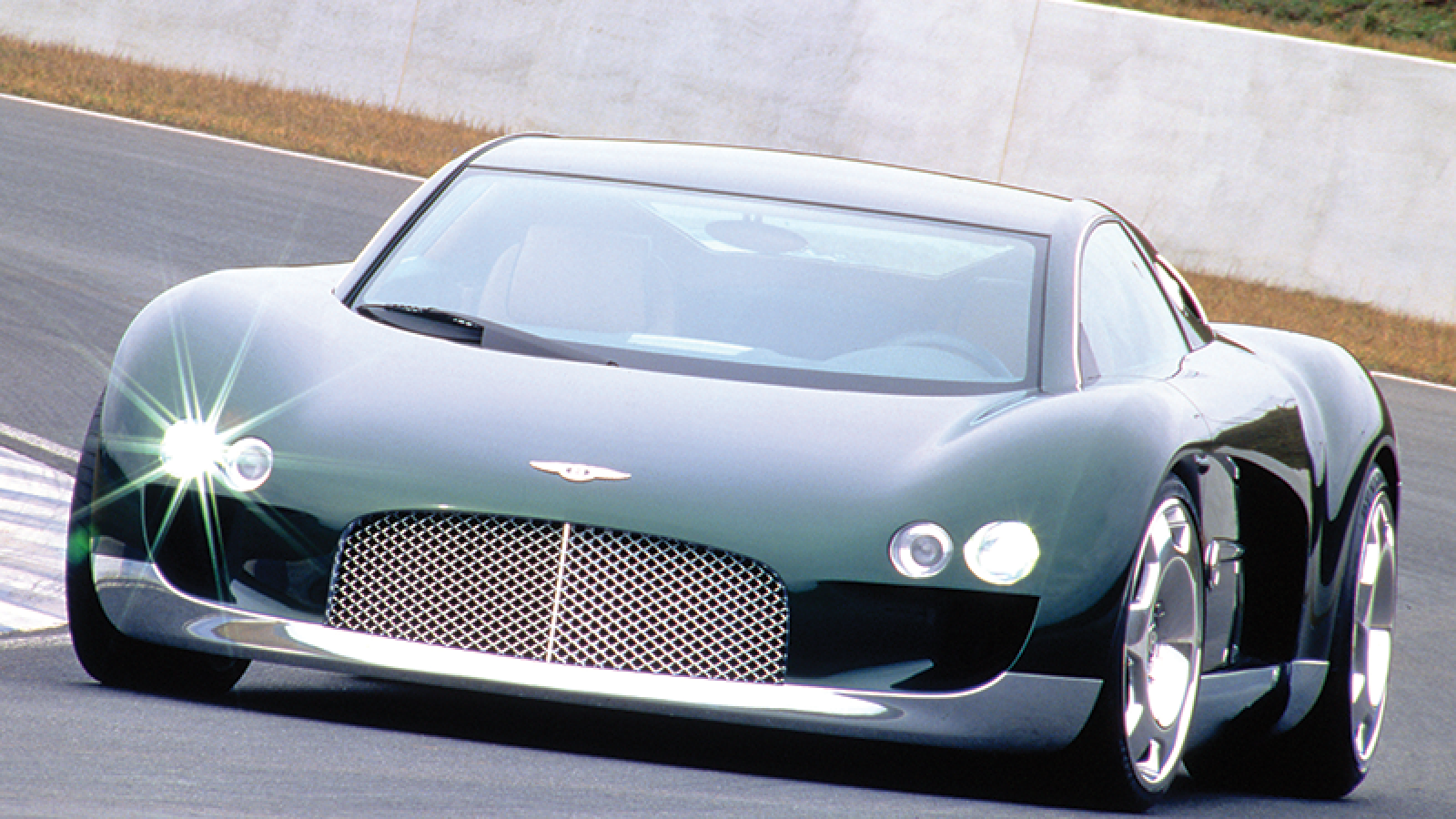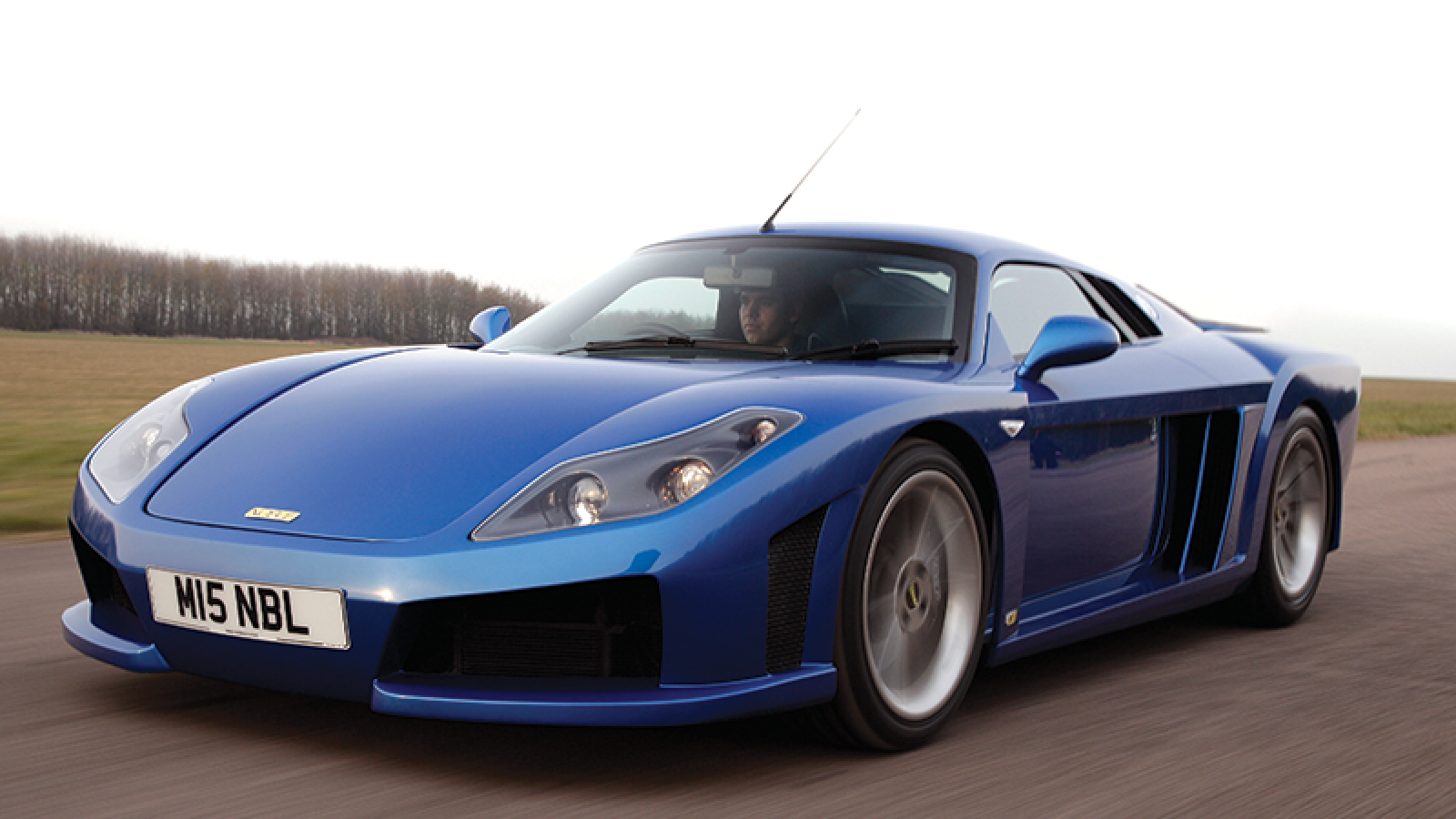-
 © Haymarket Automotive
© Haymarket Automotive -
 © Getty
© Getty -
 © British Motor Museum
© British Motor Museum -
 © Haymarket Archive
© Haymarket Archive -
 © Haymarket Archive
© Haymarket Archive -
 © Haymarket Archive
© Haymarket Archive -
 © Haymarket Archive
© Haymarket Archive -
 © Haymarket Archive
© Haymarket Archive -
 © Bonhams|Cars
© Bonhams|Cars -
 © Haymarket Archive
© Haymarket Archive -
 © British Motor Museum
© British Motor Museum
-
Not all concept cars make the cut
You’ve got to love the UK’s low-volume car industry.
Brimming with ambition, but more often lacking the funds to realize the potential of many of its most exciting and innovative designs, it has left in its wake a series of so-near-yet-so-far concept cars that never quite made the grade.
And when it comes to would-be sports cars, this country has an enviable track record.
Some have emerged from resin-dust-encrusted workshops in the Midlands to enjoy fleeting fame before being unceremoniously scrapped.
Others were conceived to change our perceptions about a brand, before their technical complexity set alarm bells ringing in the finance department.
And by the time a few more had been unveiled, changing market forces had simply prevailed enough to kill their original business cases.
But not all of the UK’s homespun sports car concepts were produced by auto makers synonymous with such vehicles.
Mainstream doyen Vauxhall can take a bow here, in its quest to find a more youthful following during the 1960s.
At the other end of the market, Bentley dabbled in the supercar world, while Aston Martin’s Bulldog was so forward-thinking that its true mettle wasn’t tested until 2023.
But they all have one thing in common: none ever saw a showroom.
-
1. Triumph Lynx
In the late 1960s, there were rumors that the lucrative American market was set for an all-out ban on new convertibles, which would have impacted quite massively on BLMC’s portfolio.
By 1972, Triumph’s TR6 successor, the TR7, had been signed off as a fixed-head coupe, but the company was still left with the open-topped four-seater Stag.
Partly buoyed by the success of Reliant’s coupe-cum-wagon Scimitar, Triumph embarked on the Lynx program, which took the upcoming TR7’s platform and added 12in to its wheelbase to create a low-slung, sporty four-seater hatchback.
Powered by Rover’s now fuel-injected 3528cc V8, the Lynx had all the ingredients of a sleek, swift grande routière, with 125mph performance.
Alas, while the Lynx’s front-end styling was taken from Harris Mann’s TR7, aft of the scuttle was the work of Leyland’s in-house design team – and the result was incohesive to say the least, borne out by its poor performance in US sales clinics.
Torrid industrial relations at Triumph’s Speke plant, where the Lynx was due to be built, resulted in the project being scrapped in 1978.
Anorak fact MG had also planned to base its BGT replacement on the Lynx, fitted with the four-cylinder O-series engine
-
2. Rover P6BS
Rover was on a roll by the mid-1960s. The advanced P6 had just been launched, and company chief ‘AB’ Smith had dreams of replacing the aged P5 sedan with a sports car that could take the fight to Triumph’s TR series.
Spen King used Rover’s recently purchased, ex-General Motors all-alloy 3528cc V8 and mounted it not only amidships in the now-named P6BS, for sharper handling, but also back to front, with the gearbox fitted ahead of the engine.
An ingenious arrangement delivered drive back to the rear wheels, which were suspended by the P6’s de Dion tube.
Clothed with a body that was, said King, “just drawn and made in engineering”, the P6BS weighed a mere 2801LB (1270KG) and achieved a Ferrari-matching 0-60mph in 7 secs. It maxed out at 140mph.
But, despite a David Bache restyle and name-change to ‘P9’, the P6BS became an early victim of Rover’s absorption into the newly formed BLMC conglomerate, with Jaguar and Triumph both (understandably) seeing a threat to their XK-E (known as the E-type in the UK) and upcoming Stag models respectively.
Anorak fact Only one P6BS prototype was ever made. It now resides at the British Motor Museum in Gaydon
-
3. Jaguar F-type
This F-type is connected not with the later production car of the same name, but rather a jaw-droppingly beautiful concept from 2000 intended to embody the spirit of the E-type (sold as the XK-E in North America) for the new millennium.
Conceived under Ford’s management of Jaguar, in response to the success of rivals’ models such as the Porsche Boxster and Audi TT, the F-type’s design was overseen by the late, great Geoff Lawson.
Keith Helfet picked up the mantle after Lawson’s death in 1999, and the car that appeared at the Detroit show the following year stunned audiences.
Combining just the right mixture of retro and modern, the sleek, roofless F-type was to be powered by Jaguar’s AJV6 engine.
Despite the concept’s popularity, when incoming design boss Ian Callum was tasked with productionizing the F-type it became mid- rather than front-engined, to retain its lines, and at the same time was renamed the ‘X600’.
By 2002, however, Ford’s management decided that low-volume sports cars were out and diesel engine development was in. The F-type/X600 was no more.
Anorak fact Jaguar used Honda NSX mules to validate the X600’s chassis dynamics
-
4. Bentley Hunaudières
In 1999, Bentley was able to shed the specter of being a badge-engineered brand when Volkswagen took control.
It celebrated at the Geneva Salon with the Hunaudières concept, shattering illusions that Crewe would take a predictable path into the new millennium.
The Bentley was powered by a naturally aspirated 8-liter W16 engine mounted amidships, the first time a Crewe car had been so configured; it was also the first Bentley with four-wheel drive.
Mounting the engine aft of the cabin helped to optimize aero and aid a claimed top speed of 217mph.
The body, formed from aluminum and carbonfiber, was set off by (at the time) huge 20in wheels.
But new VW-owned siblings Bugatti and Lamborghini were deemed a better fit than Bentley for a supercar of such calibre, and the Hunaudières remained a one-off.
Anorak fact The Hunaudières took its name from the Le Mans straight where Sir Henry ‘Tim’ Birkin overtook Rudolf Caracciola’s Benz at 125mph with a wheel on the grass
-
5. Vauxhall Piper
In 1963, Vauxhall design chief David Jones saw an opportunity to cash in on the success of the Austin-Healey Sprite by clothing the new HA’s underpinnings with a sleek and modern two-seater sports car body and going head-to-head with the diminutive ‘Frogeye’ model.
Working from Vauxhall’s all-new design center in Luton, Jones’ team took the concept from a sketch to a full-sized clay model in just two months, by which time overtones of Jaguar XK-E/E-type and Chevrolet Corvette were already visible.
However, cute and rakish though the now-named Piper roadster was, there was almost no concession to practicality.
That problem was addressed in a second, larger version (pictured), which sported deeper sill panels and faired-in headlights.
A final, driveable iteration, thankfully powered by the then-new Victor VX4/90’s 1594cc ‘four’ rather than the Viva’s rather anemic 1.1-liter lump, was prepared for parent GM’s design vice president, Bill Mitchell, when he visited later the same year (1963).
But, while never recorded, it’s likely that the sales-volume-versus-development-cost equation killed any dreams of production.
The program was halted soon after, and the sole prototype was dismantled.
Anorak fact The Piper prototype was registered 281 NM and tested flat-out at Vauxhall’s Chaul End test track
-
6. Noble M15
Here is a classic tale of triumph and tragedy.
In the early 2000s, Lee Noble’s eponymous company had enjoyed huge success with its M12 model.
But by 2004, Noble wanted to attract more affluent buyers prepared to pay a bigger premium for its cars.
After previewing the M14 concept at that year’s British Motor Show, Lee decided that a fresher, more cutting-edge look was needed for the still M12-based production model.
Called the M15, the second concept had its mid-mounted, twin-turbo 3-liter Ford Duratec V6 installed in-line versus the M12’s transverse set-up, and it transmitted the increased c450HP to the rear wheels via a new and bespoke Graziano manual gearbox.
The UK press was blown away by the rough-and-ready mule used to showcase the new M15’s abilities, and Noble was besieged with orders, even at a £74,950 asking price.
However, Lee succumbed to a hostile takeover of his firm, and new owner Peter Dyson declared his distaste for the M15: “I want that car cut up.” Noble capitulated and the M15 was no more.
Anorak fact The subsequent M600 production car was based on Noble’s rejected design of the original M14 show car
-
7. Aston Martin Bulldog
‘Bulldog. It’s British – and could be the world’s fastest road car,’ read Autocar’s April 19, 1980, cover.
‘Could’ being operative here, because while in theory Aston’s revolutionary supercar was capable of being the first production car to exceed the double-ton, the reality wasn’t so simple.
The Bulldog program didn’t start in earnest until 1979.
Radical in every way, the stark elegance of its aluminum body was underpinned by a c600HP mid-mounted, twin-turbo 5.3-liter V8 with 500LB FT of torque for a theoretical 237mph top speed.
An ultra-stiff steel spaceframe meant it weighed 3395LB (1540KG), but gullwing doors, 345mm rear tires and a clever sliding shield over a bank of five headlights gave it visual drama like no other.
Aston’s engineers took the Bulldog to 191mph at MIRA, but by 1981 the company was on its knees and time was called on the program.
Anorak fact The sole Bulldog prototype was restored in 2022 and achieved 176mph during a wet-weather attempt to hit 200mph – on June 6, 2023, it finally surpassed its 200mph target
-
8. Lotus M250
In the late 1990s, Lotus had a yawning chasm to fill between its new Elise and the by then ageing Esprit.
It also, like many others, wanted a piece of the lucrative sub-£50k sports car market Porsche was enjoying with the Boxster.
Improving on the extruded and bonded aluminum construction techniques used by the Elise, the M250 was a larger, better-appointed model, powered by a Lotus-tuned 3-liter V6 mounted transversely amidships.
Unveiled at the Frankfurt show in 1999, Russell Carr’s quite radical design included forward-lifting doors for ease of entry and a more spacious cabin than that of the Elise, yet it still had a dry weight of less than 1000KG (2205LB).
It was no flight of fancy, either, with Lotus telling Autocar in August 2000 that the M250 would ‘very likely make it to production’.
Two Esprit-bodied mules were even built to prove the powertrain and chassis, but it wasn’t to be.
After Lotus failed to make the car compliant with the all-important US manufacturing regulations, the project was killed.
Anorak fact The M250’s engineering team claimed that the M250 was so capable it could see off the lighter Exige on track
-
9. TVR Zante
Determined to push the TVR brand upmarket, chairman Martin Lilley commissioned designer Harris Mann to produce a styling exercise for a sports station wagon in time for the 1971 Earls Court Motor Show.
Mann based the show car – initially known as the ‘SM’ after Specialist Mouldings, which made the body – on the ageing Vixen’s multi-tubular chassis.
Reaction was positive and it was decided to evaluate the model for production under its new name, Zante.
Engineer Mike Bigland fitted the Vixen’s 2.5-liter Triumph engine and drivetrain, and Lilley tested the car in the USA.
But the ergonomics and vision were poor, and Lilley received a negative reaction from customers Stateside, who in any case wanted their sports cars to pack a V8 punch.
Deemed unviable for production, the Zante was shipped back to the TVR factory in Blackpool, UK, and unceremoniously dumped.
Anorak fact Positive public reaction to the Zante at Earls Court could also have been down to models Helen Jones and Susan Shaw posing nude on the TVR stand
-
10. MG EX-E
As incongruous as it may seem, in the mid-’80s MG was on its way to producing a sports car to rival Ferrari’s 308.
Austin Rover Group design chief Roy Axe wanted to prove that the firm’s new design facility could operate on a global scale, and he wanted to inject some pizzazz into the brand.
The radical, powerful two-seater showcased advanced tech such as adaptive suspension, sat-nav, a head-up-display and LCD instruments.
The EX-E took its underpinnings from the MG Metro 6R4 and used a version of that car’s V64V engine, with around 250HP.
An all-aluminum bonded spaceframe was clothed with unstressed body panels, and the EX-E had a drag coefficient of just 0.24Cd.
Reaction was highly positive at the 1985 Frankfurt show, but ultimately the EX-E was seen as a step too far from MG’s core audience, and Austin Rover pursued the dream no further.
Anorak fact An Austin Rover product planner loaned Axe his own Lotus Esprit as a dimensional reference model, receiving it back two months later with blobs of clay on its bodywork
